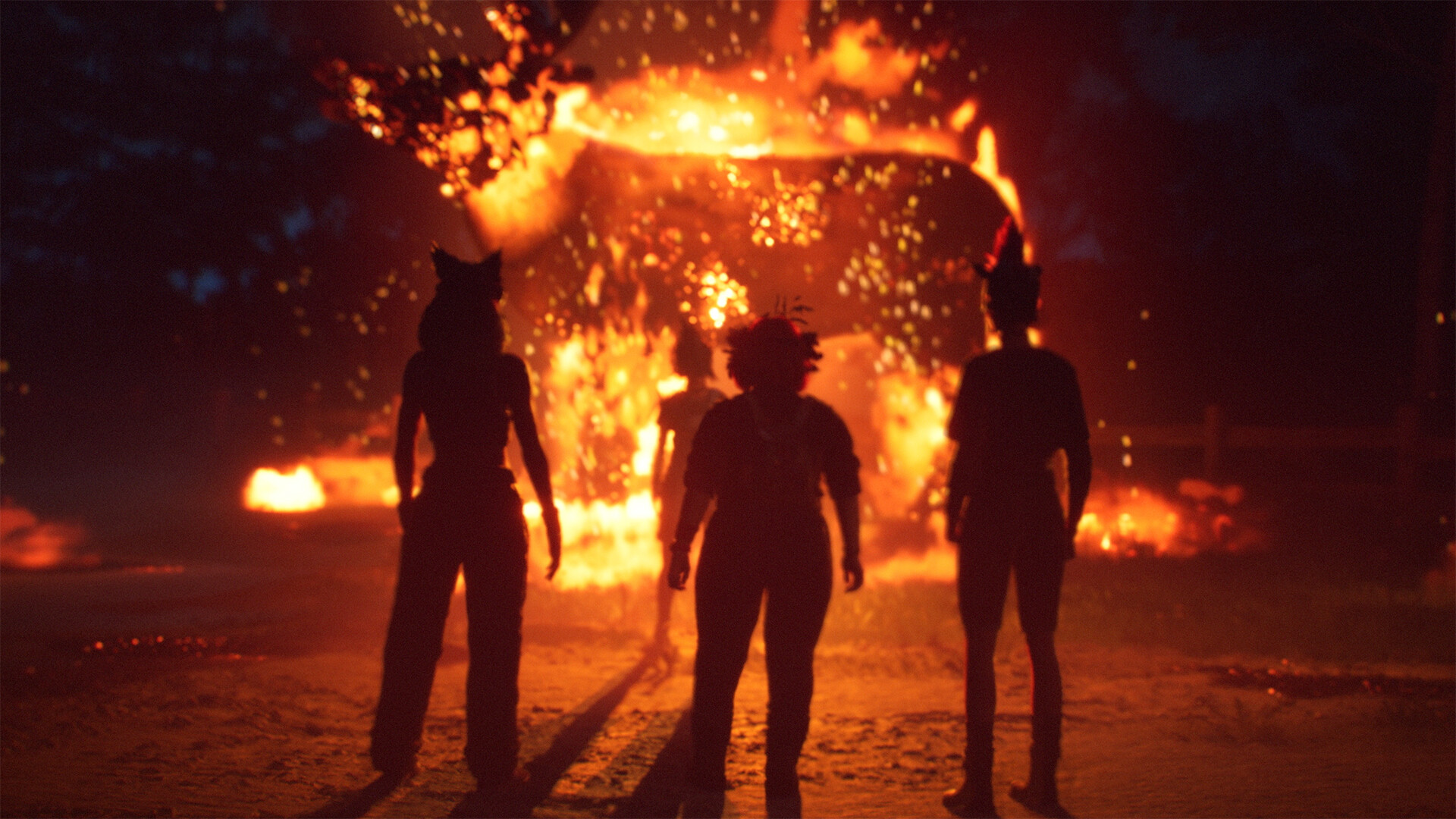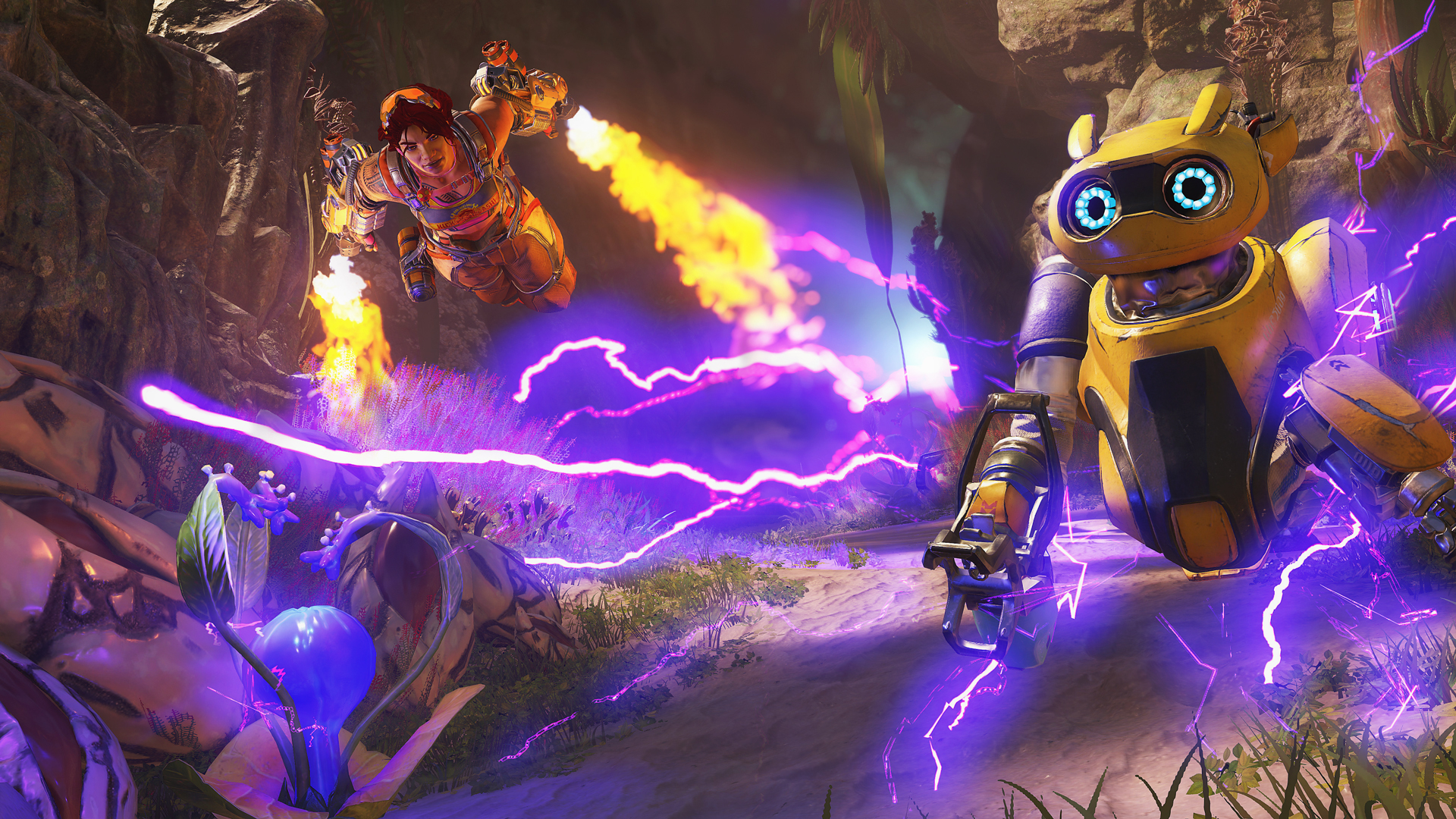
With Crucible, Amazon is taking its most significant step into the games industry yet. The publisher is leveraging its immense platform to engineer what it believes will be a new breed of competitive team-based shooters. Crucible is a free-to-play action game built on the foundational design of the burgeoning 'hero shooter' genre, charting its evolution beyond it by drawing from a litany of industry success stories and experiments. The result is an experience that feels familiar, albeit with an otherworldly ability to grasp ahold of your attention.
While it would be easy to characterise Crucible as a third-person Overwatch at a distance, once you get up close and personal with it you'll quickly come to realise that this comparison ultimately does it a disservice. Even if the fundamentals may look recognisable, Relentless Studios has made a number of smart decisions in its debut that will work to keep you engaged in the evolution of your hero while ensuring that your squad is focused on completing shared objectives. That balance has been struck in service of Crucible's core approach to play, a loop encompassed by three words: Hunt, Level, and Adapt.
Hunt your prey
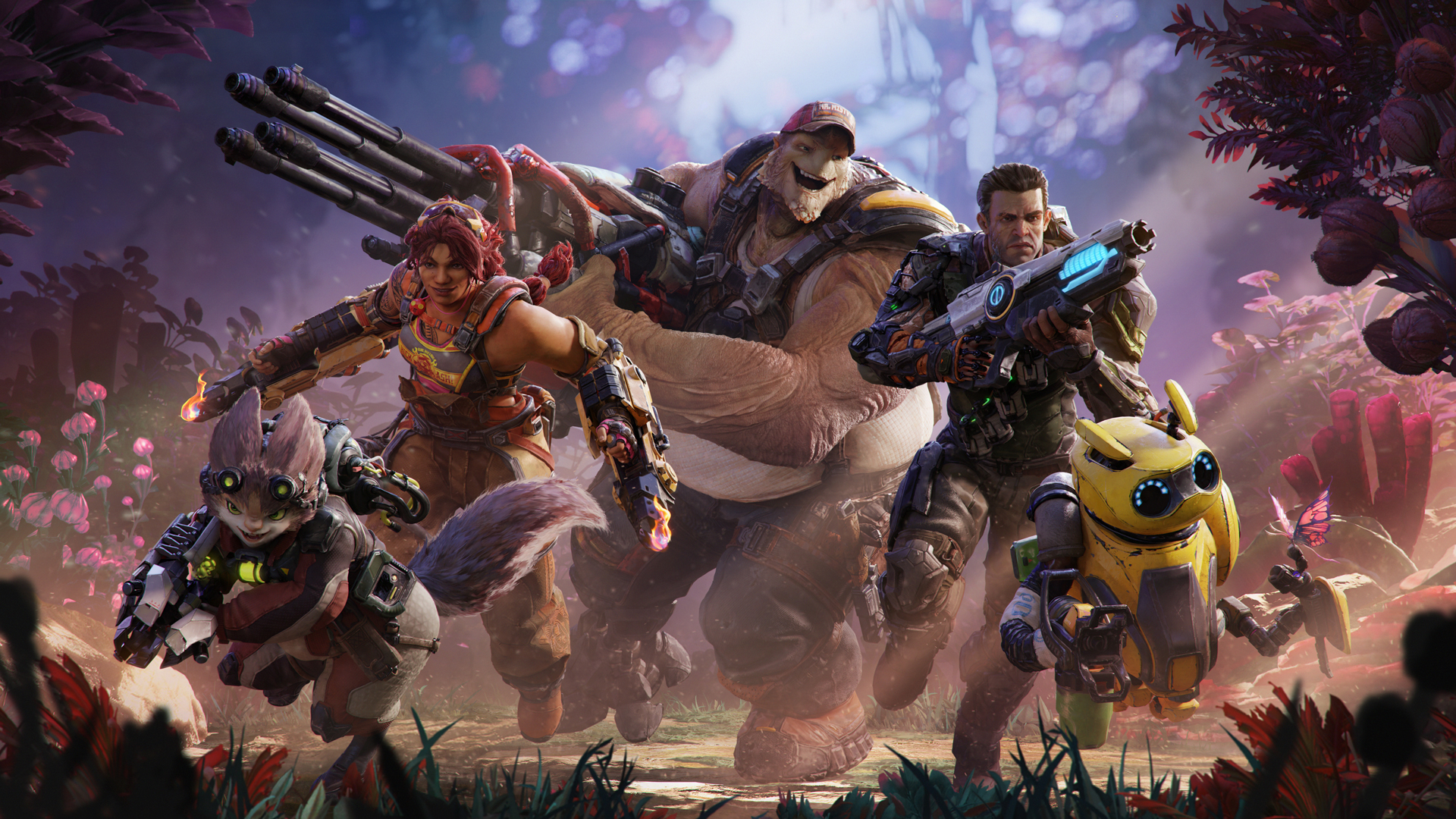
Crucible is going to launch with 10 distinct Hunters, each equipped with their own unique weapon and set of abilities. These fighters are distinct in their capability and build, their silhouettes easily identifiable on the horizon as you're stomping across the lush planet in which the action takes place. Some, like Summer and Tosca, are built around mobility and crowd-control. Others, like Drakahl, are focused on short-range melee attacks to hold the attention of sparring Hunters around crucial objective points, while characters like Earl are designed to lay down heavy attacks in mid-range engagements. Regardless, each Hunter comes with its own personality, loadout, and utility – getting to grips with each is easy enough, learning how to best utilise them in play is far more challenging. I know, I know; so far, so Overwatch.
Where Crucible carves its own path is in how the game is geared wholeheartedly towards offensive play, quick movement, and decisive decision making. Most traditional hero shooters attempt to split their characters between archetypal roles – Tank, DPS, Healer, and Support – but you won't find any such delineation here. The Hunters don't have a specific role to play, with each of the characters able to hold their own in combat or work to capture objectives if you know how to properly position and utilise them. Engagements are a push and pull between working to your character's strengths while attempting to mitigate the proficiencies of the foes that are in front of you.
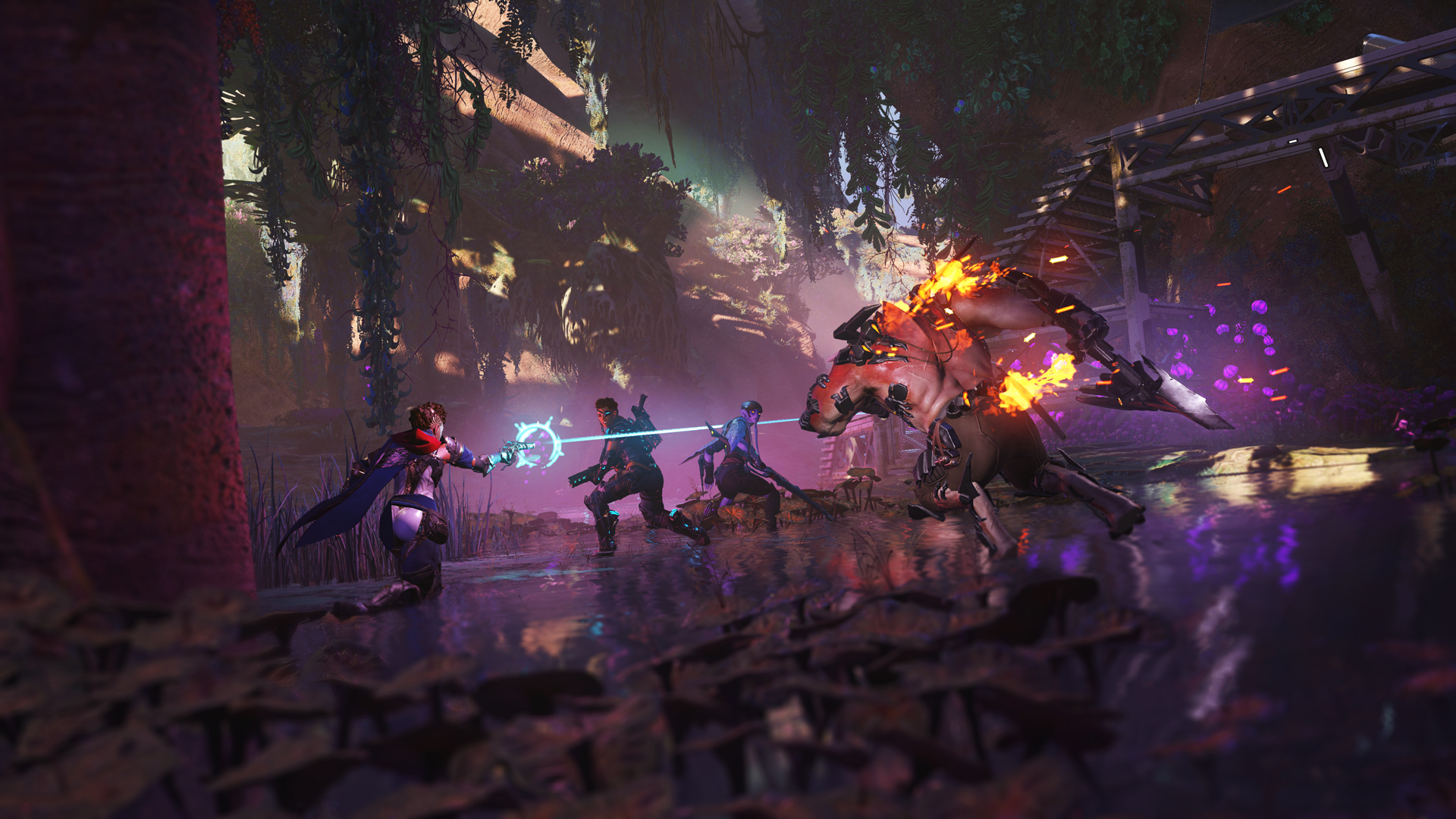
"Rather than having set roles, each Hunter is designed with a specific playstyle in mind"
It's a balance that works to keep Crucible interesting. Rather than having set roles, each Hunter is designed with a specific playstyle in mind. If you're the type of player that is traditionally interested in playing support or healer roles in competitive shooters, there are Hunters that will let you scratch that particular itch, but you'll also find that you have the propensity for enacting damage, defending yourself, holding positions, and causing chaos in skirmishes should you need – and know how – to. Understanding how to take advantage of your weapons, abilities, and character's level is half the fun.
Speaking of levels, you'll have the ability to tailor the playstyles of each Hunter too. In addition to having unique weapons and abilities, each of the heroes has a unique set of upgrades. You'll lock into a particular character before a match begins – in an ideal world, working with your team to strike a balance in squad composition in the name of synergy – and then you'll have just a few minutes to run through a skill tree, assigning five prospective upgrades that will unlock gradually throughout the game as you level up. This adds a really interesting dynamic to play; you're never quite certain what variant of Hunter you'll be coming up against and neither is the enemy, and this ensures that the boundaries of engagements are constantly shifting all throughout a match. It may sound like a small shift on the traditional hero shooter setup, but in reality it means that you aren't just factoring on your skill and proficiency with any given character and their loadout, but factoring in an always evolving strategy as you, and other hunters, level up and gain power over time.
Level together
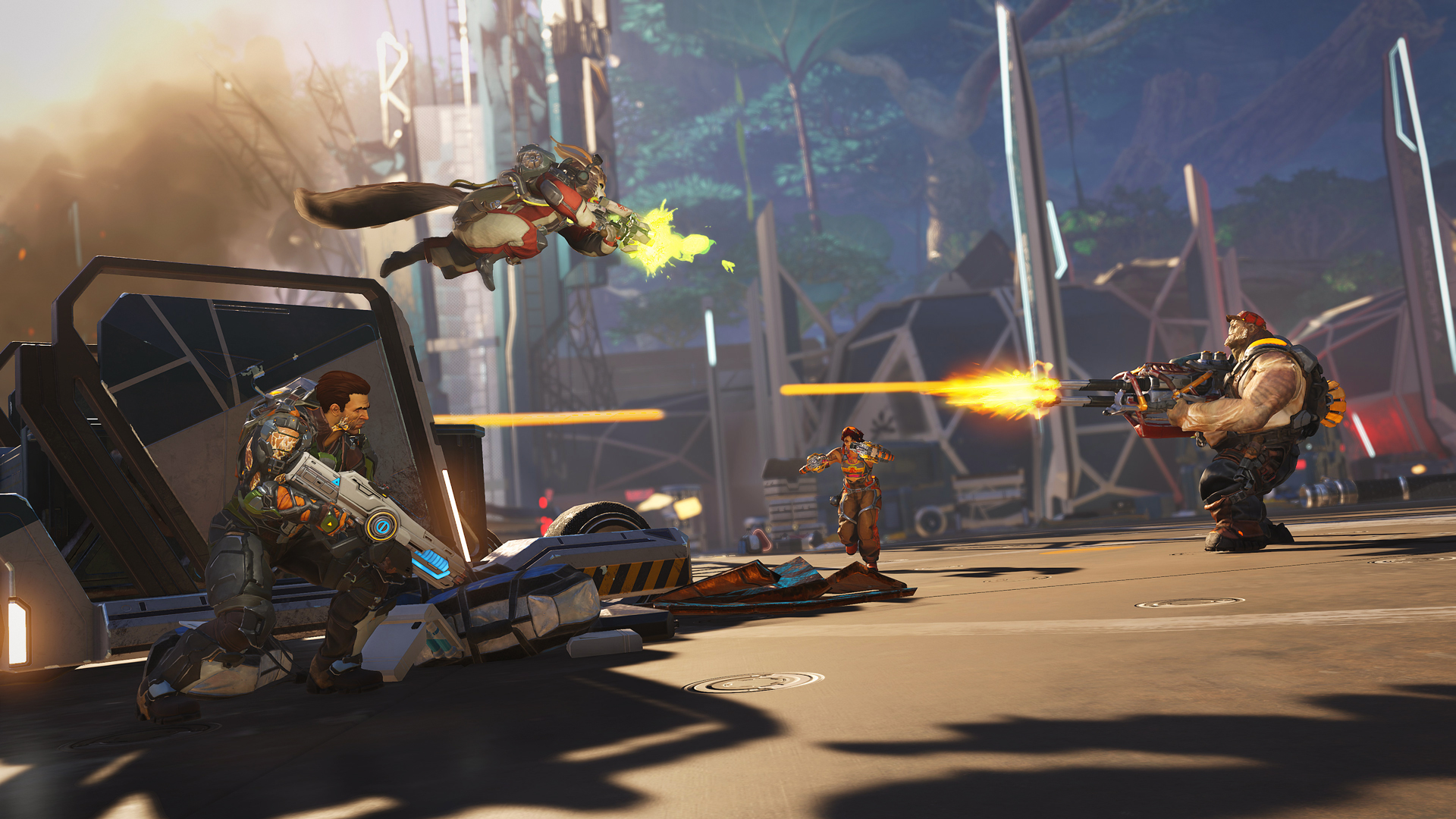
It's the way that Crucible carries this malleable approach to heroes into the battlefield that really catches the attention though. Once you hit the planet's surface, the game strikes a strange balance. There's the third-person Overwatch element to it, of course – skill based shootouts in which you must account for positioning, outlying hazards, and balancing your mobility against your offensive and defensive capabilities. But there are other creeping influences too, running the gamut between Turtle Rock Studios' Evolve to FASA Interactive's oft-forgotten Shadowrun.
Sign up to the GamesRadar+ Newsletter
Weekly digests, tales from the communities you love, and more
The opening minutes to any game of Crucible will traditionally see your squad split into smaller groups and attempt to take control of portions of the lush, sprawling map. The early game is important as it's your only real opportunity to gather Essence unimpeded, before the key objective and points begin to reveal themselves and demand your full attention. Essence is a resource in Crucible that you earn by capturing objective points, killing enemies and, crucially, by farming creatures that exist in the world.
These creatures are largely docile, hostile if provoked – which can, of course, be implemented into strategies should you really want to get creative – and are integral to unlocking upgrades. As you gather Essence your team levels up, unlocking one of the upgrades you selected before the match began, which can do everything from granting you all-new abilities, improve existing ones, or modify the stats of your chosen character. It's in this system where Crucible really settles into its own rhythm, with the nature of play and the strategies executed by your team shifting by the minute.
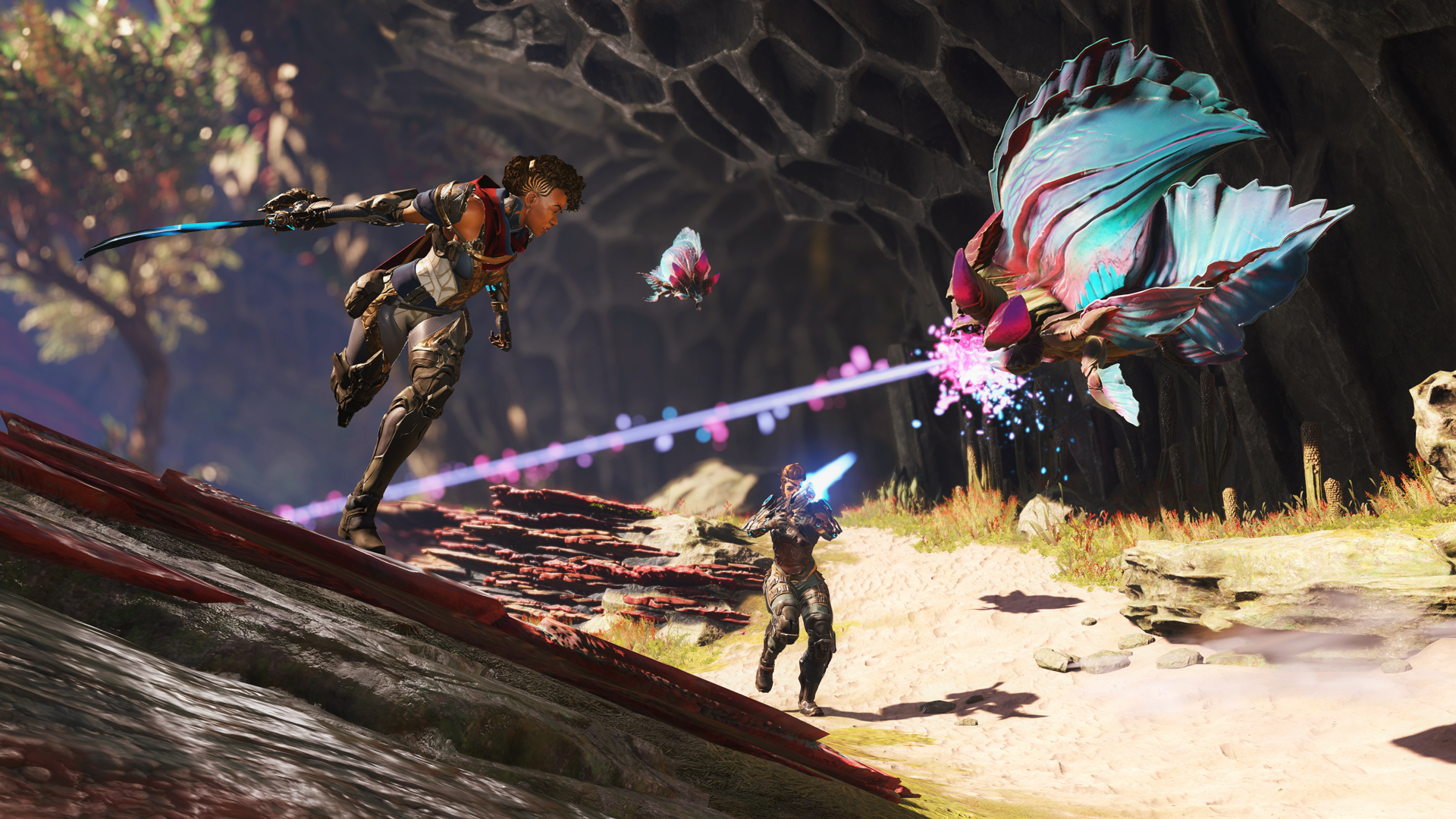
"Crucible quickly settles into its own rhythm, with the nature of play and the strategies executed by your team shifting by the minute"
You'll need to shift your time between gaining modifiers on the map, crowd-controlling enemies, and working to tackle herds of creatures for the greater good of your squad. As I mentioned before, if you're interested in Support or Healer roles, upgrades can open you up to this type of play with certain heroes as you level up – giving you more scope to heal or barrier friendlies, or to obscure visibility and generally be a nuisance to send your foes into a fury.
All of that is to say, then, that Crucible is a lot of fun once it gets going. The parameters always feel like they are shifting. Combat is skill based, requiring a careful hand and quick reactions, while the aggressive nature of each of the Hunters ensures that each confrontation feels competitive. Crucible also does a surprisingly good job of letting individual heroes hold their own against a group while you wait for your friends to show up, unlike something like Bleeding Edge where coordinated groups are able to dominate with ease.
There's a mature hand behind Crucible's design. It's been created by a group of veteran designers and play-tested heavily by players that used to run in competitive shooter circles, and that is reflected in the game's core design, ethos, and balance. The loop itself is solid, built on strong foundations typical to the genre and an understanding of archetypal character roles that exist within it; propelled onward by a lineup of Hunters that are as bubbly as they are varied, and by the exceedingly fun combat and kinetic nature to engagements, particularly once both teams have access to all of their unlocks and abilities are unleashed with relative ease.
Adapt to your surroundings
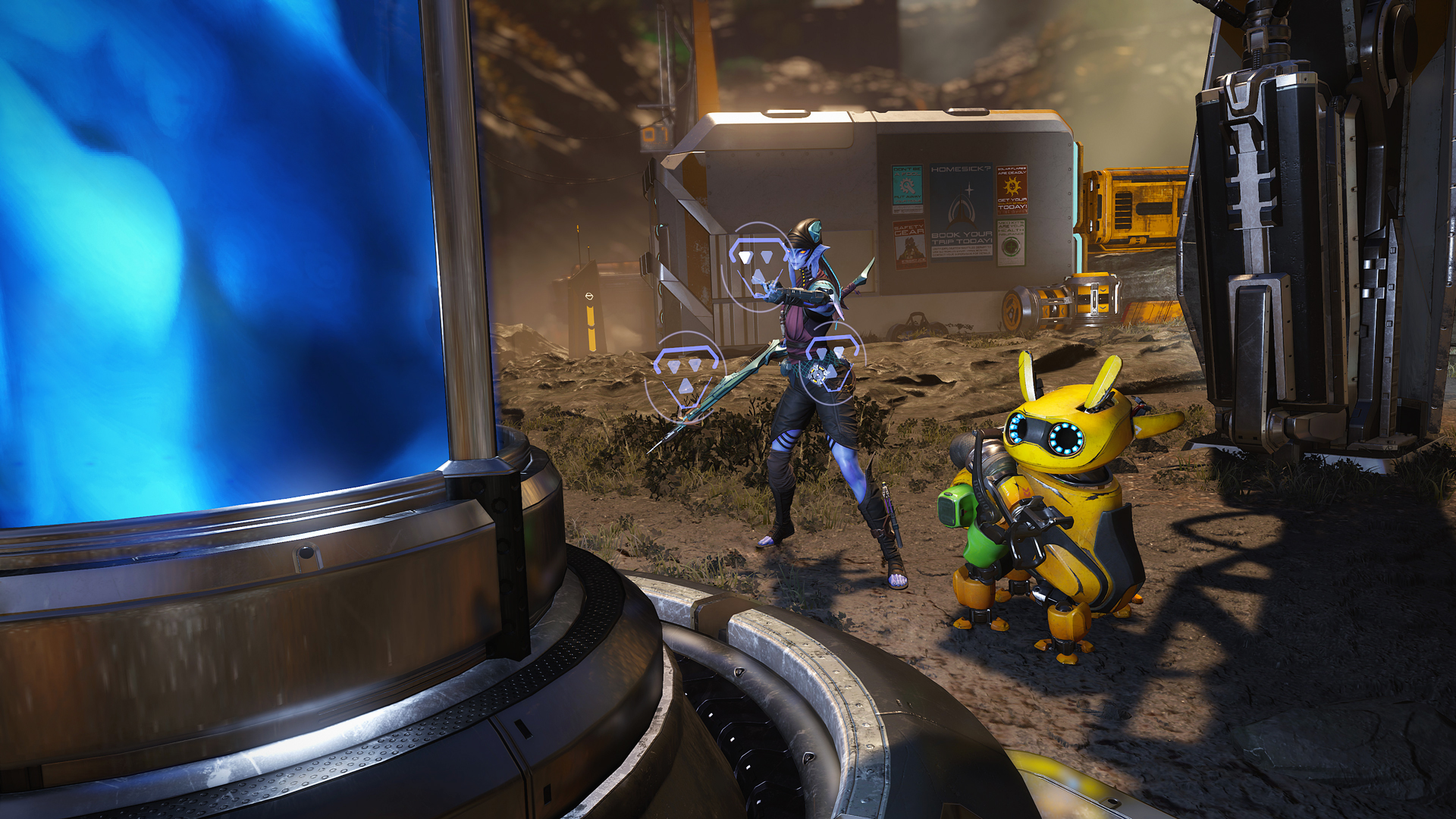
The true test for Relentless Studios and Amazon Games will be in stability and retention. There's no shortage of games to be played today and the free-to-play market is looking healthier than ever. The studio is planning to regularly update Crucible over time with new heroes, customisation options, a new maps to join the one the game is launching with, and new modes to complement the three currently available. While these modes are fun and built to encourage team-based play, only one really stands out from the pack – is reflective of the desire to evolve that is present throughout the rest of the game's design.
Heart of the Hives is a four versus four in which teams must take on massive bosses and capture three 'Hearts' to win, while Harvester Command sees eight players go against another eight to earn points by capturing and holding Essence harvesters. Fun to be found in these modes, sure, but it is Alpha Hunters that'll really make or break the game. In it, eight teams of two players drop into the map, each vying to be the final team standing.
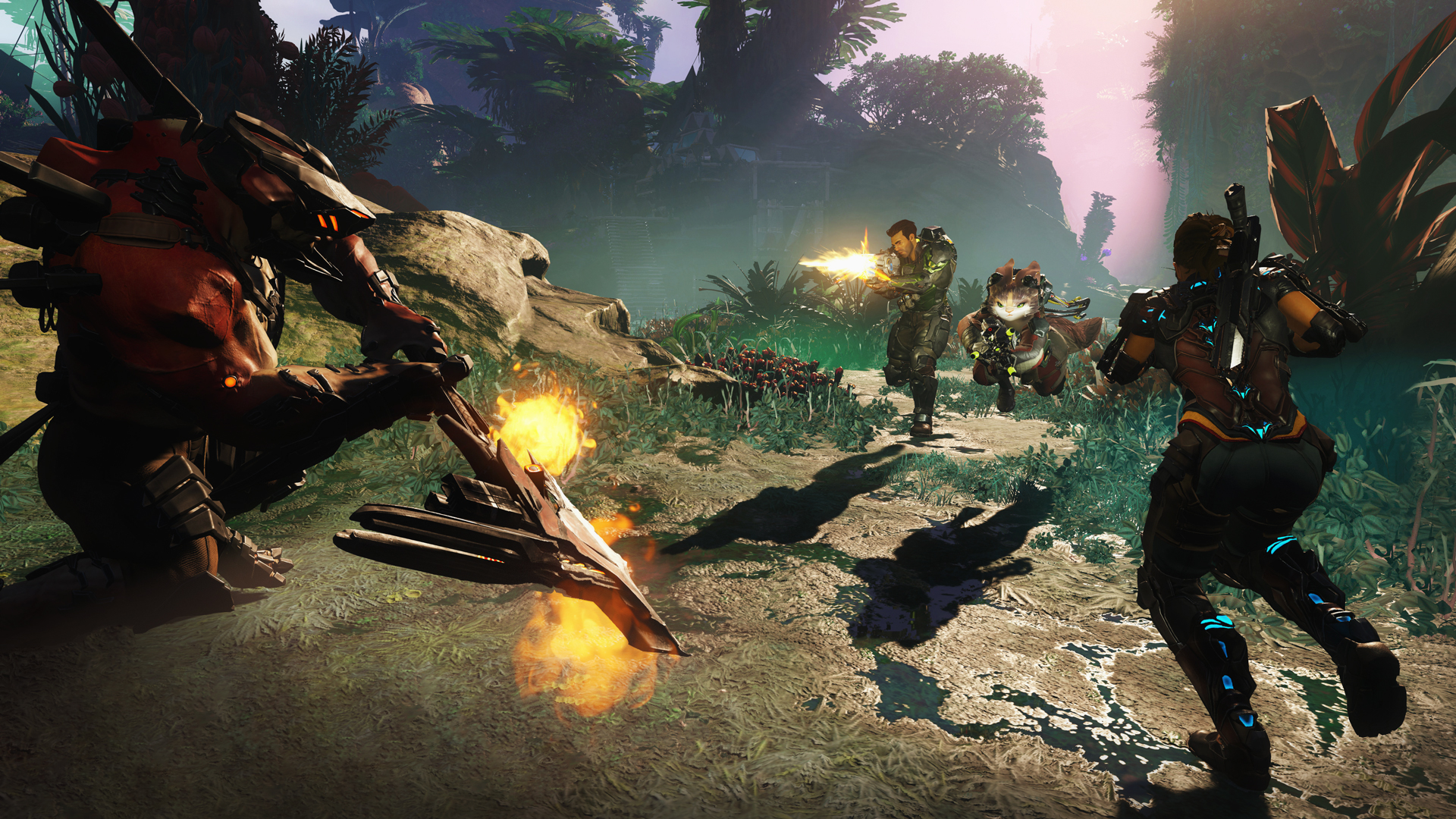
From what I understand from my time at the studio, iterations of Alpha Hunters have been in the works since the earliest days of the project. This isn't Amazon's take on the battle royale, but rather a team-based mode with a killer twist that has been refined and heavily playtested over the years. If your teammate gets eliminated during the game – leaving you stranded as a solo player in an already dangerous world – you'll be able to form uneasy alliances with any other rogue players that you encounter. A quick button press lets you invite the player to form a temporary alliance, becoming a team of two again, which lasts until there are just three players left in the match – at which point the bond is broken and it becomes a free for all. More interestingly still, you can actually choose to break off the alliance of your own accord. You can even do it mid-engagement; there's a sickening pleasure to be drawn out of betraying somebody in the middle of a heated firefight, especially if it involves immediately joining with another player you had just widowed.
There's still a lot of Crucible that will be tested in a trial by fire of sorts. The balance of Alpha Hunters is one such element, although its success could really help set Crucible apart from the cabal of contenders out there right now. There are also questions of just how pervasive microtransactions will be, how interesting the customisable cosmetics will be, and how Amazon Games plans on structuring its Battle Pass. Still, with the game set to launch on May 20, 2020, for PC you won't have long to find out for yourself.

Looking for something to play while you wait for Crucible to launch? Here are the best free games you can jump into right now.

Josh West is the Editor-in-Chief of GamesRadar+. He has over 15 years experience in online and print journalism, and holds a BA (Hons) in Journalism and Feature Writing. Prior to starting his current position, Josh has served as GR+'s Features Editor and Deputy Editor of games™ magazine, and has freelanced for numerous publications including 3D Artist, Edge magazine, iCreate, Metal Hammer, Play, Retro Gamer, and SFX. Additionally, he has appeared on the BBC and ITV to provide expert comment, written for Scholastic books, edited a book for Hachette, and worked as the Assistant Producer of the Future Games Show. In his spare time, Josh likes to play bass guitar and video games. Years ago, he was in a few movies and TV shows that you've definitely seen but will never be able to spot him in.
